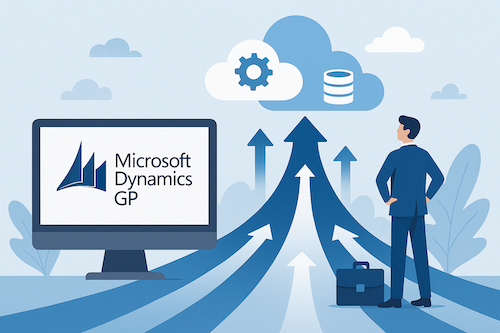
Table of Contents
Microsoft Dynamics GP End-of-Life: Navigating Your Next Steps
The end-of-life for Microsoft Dynamics GP signals a key moment for many businesses. It’s more than a software swap; it’s a chance to upgrade financial systems and gear up for future growth. This transition, while presenting its own hurdles, opens doors to modernization. My analysis of migration paths highlights several strategic options, tailored to diverse organizational needs.
Key Migration Options for Dynamics GP Users
Option 1: Microsoft Dynamics 365 Business Central
For many GP users, Business Central is the natural successor. It offers a familiar Microsoft environment and specific tools to ease the GP transition, aiming to preserve historical financial data. This path leverages your existing Microsoft investment while moving operations to the cloud. However, highly customized GP setups might find replicating specific functionalities challenging without significant configuration (a detail often overlooked). A thorough inventory of customizations is a critical first step. What level of customization are you currently managing?
Option 2: Microsoft Dynamics 365 Finance
Larger organizations with complex financial landscapes often look to D365 Finance. It’s built for enterprise-level needs like multi-entity consolidation, advanced financial controls, and comprehensive reporting. This is the choice for businesses that have outgrown GP and need more horsepower. Migrating here usually means a bigger overhaul of data and processes (it’s not a simple lift-and-shift) but unlocks substantial capabilities.
Option 3: Oracle NetSuite
Some organizations opt for a complete refresh with NetSuite, a mature cloud-native ERP. It features a multi-tenant SaaS model, robust financial controls, and strong multi-currency support, making it a strong contender in the mid-market. Moving to NetSuite is a significant technological shift but can be ideal for firms aiming for a clean break from legacy systems.
Strategic Migration Planning: Beyond the Technical
A successful ERP migration hinges on careful planning that encompasses both technical execution and organizational adaptation. It’s a blend of art and science, really.
Core Planning Principles:
- Data Strategy and Governance: Before anything moves, define clear data ownership, set quality benchmarks, and establish validation processes. What’s your current data quality like? This isn’t the place to cut corners. Consider how to query key financial tables for verification.
- Phased Rollout: Don’t try to eat the elephant in one bite. Start with master data, then open transactions, and finally, historical data. A ‘big bang’ approach is a recipe for headaches.
- Thorough Testing: Implement comprehensive testing protocols. Reconciliation reports are your best friends here, ensuring data integrity between the old and new systems.
- Integration Realities: Existing integrations with third-party systems? They’ll likely need a complete rebuild. Identify all integration points early. This is often a hidden time sink.
- Historical Data Decisions: How much history do you truly need in the new system? Full migration is complex. Summary balances or even just opening balances (keeping GP in read-only for archives) are viable, simpler alternatives.
- Timeline Realism: A typical GP migration isn’t a weekend project. Factor in 1-3 months for discovery, 2-4 for configuration/mapping, 1-2 for initial data migration, 1-3 for integrations, and 1-2 for UAT, plus cutover. Post-migration stabilization is also crucial.
The Human Element:
Technical prowess alone won’t guarantee success. The “people side” is paramount. This involves securing executive buy-in, understanding stakeholder impacts, delivering role-specific training (not one-size-fits-all!), maintaining clear communication, and tracking adoption. Underestimating ongoing support post-launch is a common pitfall.
Crafting Your Migration Roadmap
Every organization’s path from Dynamics GP, ideally from a point of maximized system value, will be unique. Success starts with a deep dive into current processes, identifying pain points, setting clear future-state goals, and honestly assessing your team’s readiness for change. How adaptable is your organization? A robust vendor evaluation framework is also indispensable.
This transition is more than an IT project; it’s a strategic business initiative. The end of Dynamics GP, while a challenge, is also a powerful catalyst for modernization. Approached thoughtfully, it’s an opportunity to implement more agile, capable financial systems that will fuel future growth.
Thinking through your migration? Let’s connect on LinkedIn to discuss your specific challenges and strategies.